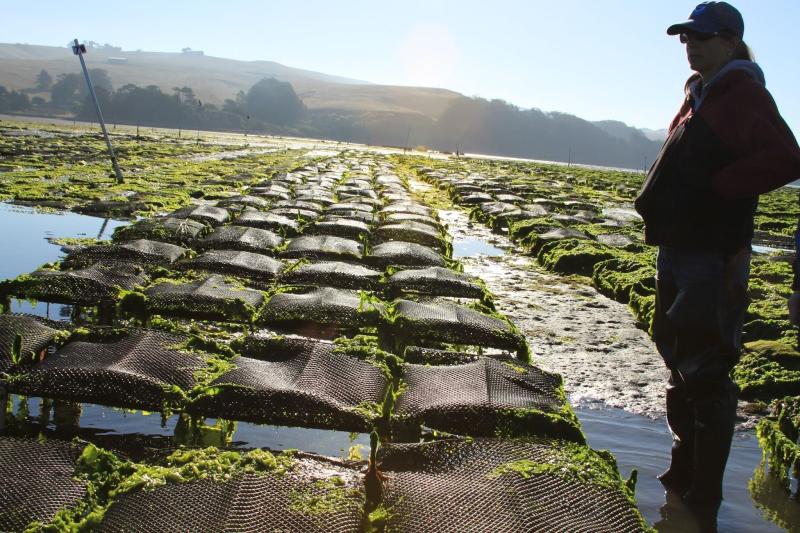November 03, 2021
Aquaculture brings healthy, sustainable oysters to your table. But how do they get there? Check out a few photos to see how aquaculture grows and delivers great seafood.
 In some places, oysters are farmed intertidally and live out of the water for a time at low tide. These shellfish are raised in mesh bags and open to filter feed during high tide. Here, a NOAA Fisheries aquaculture coordinator visits an intertidal farm. Photo: NOAA Fisheries
In some places, oysters are farmed intertidally and live out of the water for a time at low tide. These shellfish are raised in mesh bags and open to filter feed during high tide. Here, a NOAA Fisheries aquaculture coordinator visits an intertidal farm. Photo: NOAA Fisheries